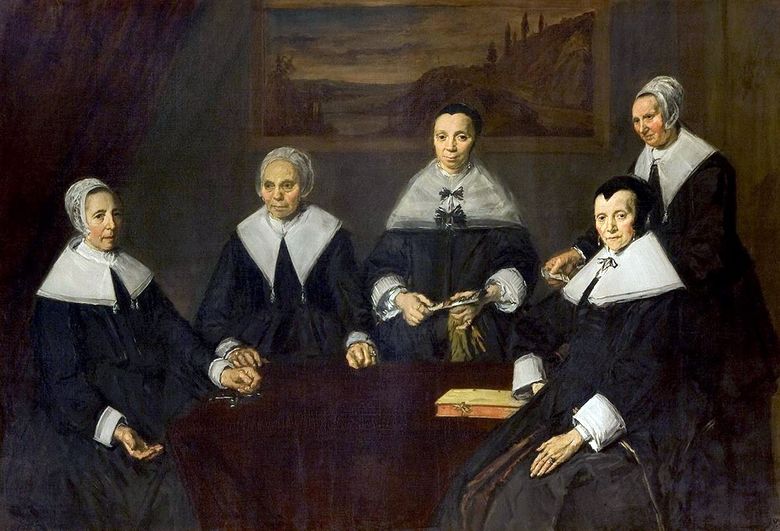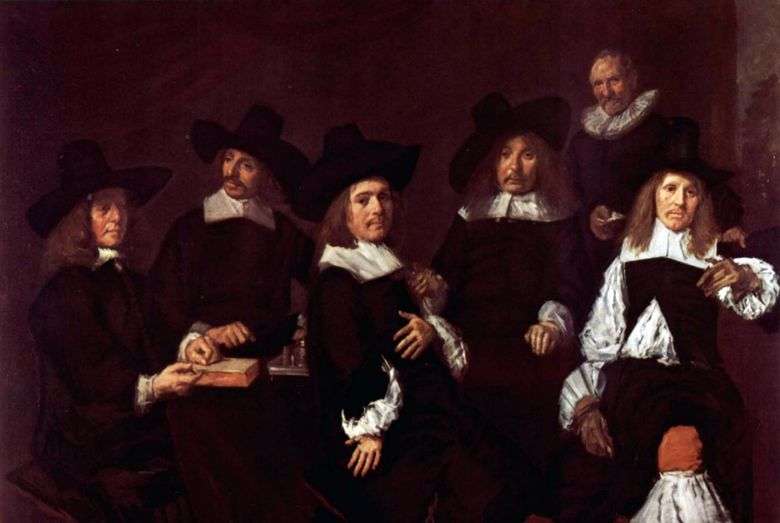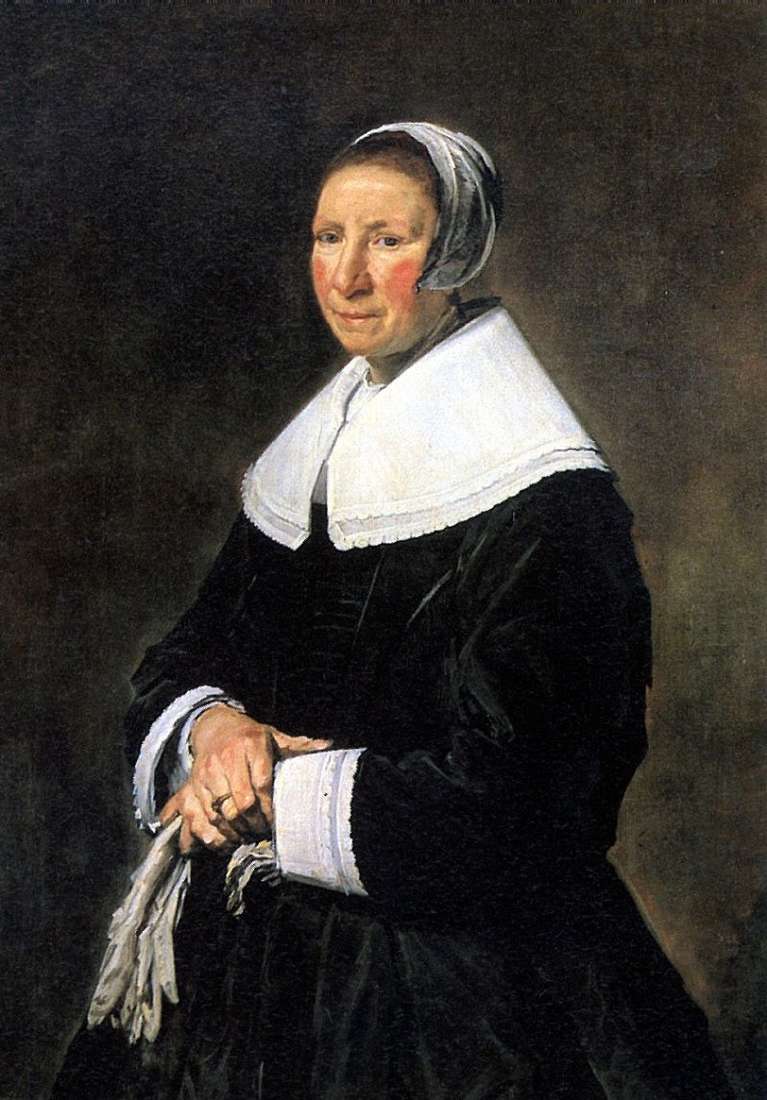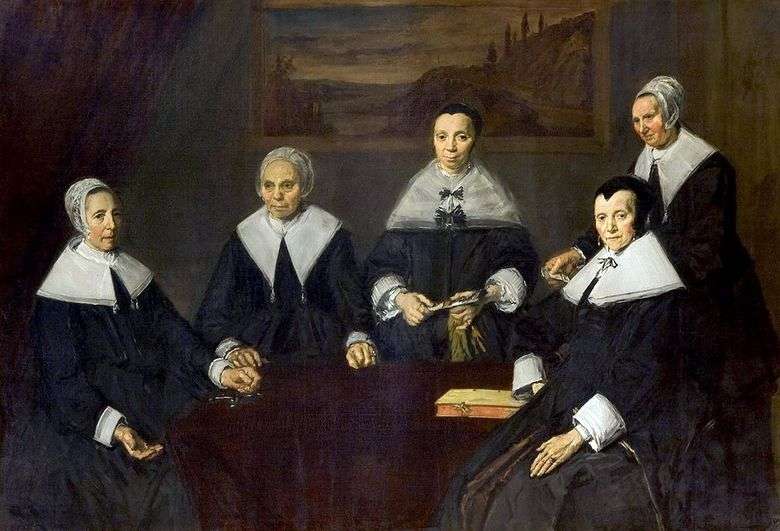
The portrait of the regents depicts, besides the old servant, five men, very different in appearance, character and spiritual possibilities. Full of hidden, but frighteningly devastating energy, an elderly man on the left confronts his weak-willed, then empty, then lowered colleagues. Among them draws attention carefully dressed for the latest fashion then dandy at the right edge of the picture. Nervous, ragged, rapid strokes Hals writes cascades of crumpled broken folds on his white shirt; graceful hand gesture in a dark glove against a lush white sleeve; reddish pink stocking, tightening his knee.
The finished elegance of the costume, the aesthetic expressiveness of these fabrics, these colors is in a strange disparity with the tired emaciation of a battered, some formless, though still rather young face. His neighbor, pushed a little farther into the depths of the picture, dropped and is seriously ill, stares in front of him with a meaningless gaze. However, neither, in fact, does not appeal to the viewer, do not notice it, immersed in thoughtless apathy. In this respect, the exception is the person sitting in the center sideways to the table. On his rather young, attractive face lies the seal of the mind and benevolence; fatigue and disappointment of his neighbors acquire from him the value of a justified, meaningful worldview.
In the view of the viewer, there is too much thoughtful detachment, so that between him and the viewer there will be established that living connection that was once so characteristic of many works of Khals. The picture is noticeably shabby, the colors are cloudy and have lost depth, and yet the strength and virtuosity of the painting testify to the enormous creative potential of the eighty-year-old artist. It happened that lovers of smooth, “pleasant” painting were unable to appreciate the beauty and expressiveness of a deeply subjective, individual manner of Hals. It was said that his paintings were written carelessly, that the artist trembled from old age with his hand. Even if it was so, the sense of form was so sharp that broad, generalizing strokes unerringly sculpted the volume, conveyed the character of the movement, the texture of the fabric, the complex expression of the human face. \
 Regents of the Harlem almshouse (Regent of the Shelter for the Elderly) by Frans Hals
Regents of the Harlem almshouse (Regent of the Shelter for the Elderly) by Frans Hals Régents du Harlem Almshouse (Régent de la maison de soins infirmiers) – Frans Hals
Régents du Harlem Almshouse (Régent de la maison de soins infirmiers) – Frans Hals Harlem Almshouse Regents – France Hals
Harlem Almshouse Regents – France Hals Regentes del Harlem Almshouse – Frans Hals
Regentes del Harlem Almshouse – Frans Hals Portrait of a Woman by Frans Hals
Portrait of a Woman by Frans Hals Regentsha Harlem Almshouse (Refugio Regentshi para ancianos) – Frans Hals
Regentsha Harlem Almshouse (Refugio Regentshi para ancianos) – Frans Hals Family portrait in the background of the landscape by Frans Hals
Family portrait in the background of the landscape by Frans Hals Merry drinking companion by Frans Hals
Merry drinking companion by Frans Hals